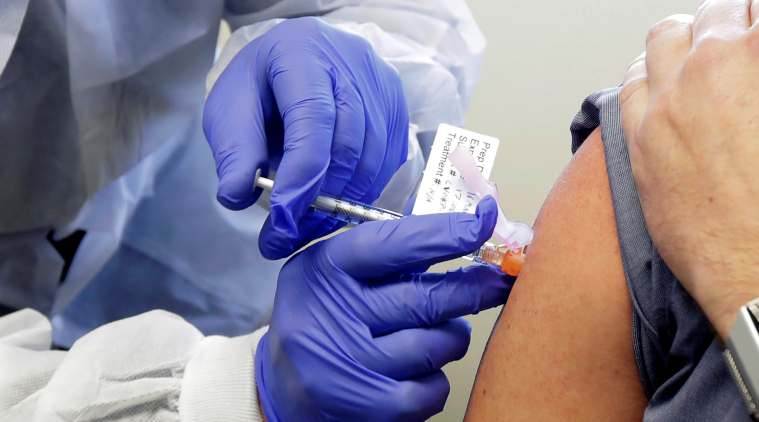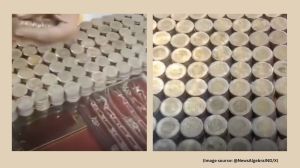Kaunain Sheriff M is an award-winning investigative journalist and the National Health Editor at The Indian Express. He is the author of Johnson & Johnson Files: The Indian Secrets of a Global Giant, an investigation into one of the world’s most powerful pharmaceutical companies. With over a decade of experience, Kaunain brings deep expertise in three areas of investigative journalism: law, health, and data. He currently leads The Indian Express newsroom’s in-depth coverage of health. His work has earned some of the most prestigious honours in journalism, including the Ramnath Goenka Award for Excellence in Journalism, the Society of Publishers in Asia (SOPA) Award, and the Mumbai Press Club’s Red Ink Award. Kaunain has also collaborated on major global investigations. He was part of the Implant Files project with the International Consortium of Investigative Journalists (ICIJ), which exposed malpractices in the medical device industry across the world. He also contributed to an international investigation that uncovered how a Chinese big-data firm was monitoring thousands of prominent Indian individuals and institutions in real time. Over the years, he has reported on several high-profile criminal trials, including the Hashimpura massacre, the 2G spectrum scam, and the coal block allocation case. Within The Indian Express, he has been honoured three times with the Indian Express Excellence Award for his investigations—on the anti-Sikh riots, the Vyapam exam scam, and the abuse of the National Security Act in Uttar Pradesh. ... Read More
After Moderna, Oxford vaccine triggers immune response in early tests
The Oxford AstraZeneca ChAdOx1 nCoV-19 vaccine candidate is currently undergoing large (Phase III) human trials in the United Kingdom and Brazil.
 A preliminary report on early-stage human trial data of the vaccine candidate – which is being developed jointly with the British pharma giant AstraZeneca – showed an “accepted safety profile”. (Photo for representation)
A preliminary report on early-stage human trial data of the vaccine candidate – which is being developed jointly with the British pharma giant AstraZeneca – showed an “accepted safety profile”. (Photo for representation)
Oxford University researchers on Monday said their vaccine candidate had triggered a dual immune response in humans against the coronavirus that causes Covid-19.
A preliminary report on early-stage human trial data of the vaccine candidate – which is being developed jointly with the British pharma giant AstraZeneca – had shown an “accepted safety profile”, the researchers said.
Explained | Oxford-AstraZeneca shot shows progress: What does this mean in fight to find Covid-19 vaccine
In a paper published in The Lancet medical journal, the researchers said the candidate, ChAdOx1 nCoV-19, had during Phase I and II human clinical trials, induced neutralising antibodies that specifically rendered the virus non-infectious in “all participants” who had been administered a second dose.
The Oxford-AstraZeneca vaccine candidate is made from a weakened version of a common cold adenovirus that causes infections in chimpanzees. The team of researchers led by Dr Sarah Gilbert of The Jenner Institute at Oxford genetically changed the adenovirus by adding the genetic material of the spike glycoprotein(s) that are found on the surface of the SARS-CoV-2 virus (which causes Covid-19).
The Oxford AstraZeneca ChAdOx1 nCoV-19 vaccine candidate is currently undergoing large (Phase III) human trials in the United Kingdom and Brazil.
During human clinical trials, vaccine candidates are assessed on three parameters, viz., reactogenicity (ability to produce common, adverse reactions), immunogenicity (ability to provoke an immune response), and safety.
In Phases I and II of the Oxford trial, 1,077 participants were enrolled to receive either ChAdOx1 nCoV-19 (543) or MenACWY (534), the vaccine against sepsis, which was used as an active control.
The study revealed two important outcomes: first, that there were “no serious adverse events related” to the vaccine candidate; second, that while neutralising antibodies, which specifically kill the virus, increased in a two-dose regimen, the vaccine candidate also showed a “marked increase” in the response generated by cellular immunity.
“ChAdOx1 nCoV-19 was safe, tolerated, and immunogenic, while reactogenicity was reduced with paracetamol. A single dose elicited both humoral and cellular responses against SARS-CoV-2, with a booster immunisation augmenting neutralising antibody titres,” the study by the Oxford COVID Vaccine Trial Group reported.
Also on Monday in The Lancet, Chinese scientists reported encouraging results in a separate Covid-19 candidate vaccine trial – again, an adenovirus-based formulation triggered an immune response without any serious adverse reactions.
Monday’s findings have come less than a week after the American biotech company Moderna published interim results of Phase 1 trials of its own vaccine candidate, which induced immune responses in all participants with “mild or moderate” systemic adverse events.
Together, the three candidates now represent the significant promise of a vaccine that could possibly end the pandemic that has so far infected over 14.5 million people and killed more than 600,000 around the world.
The key findings of the Oxford vaccine candidate’s early stage trial showed:
Reactogenicity and safety: The study revealed three broad patterns: fatigue and headache were the most commonly reported systemic reactions; severity and intensity of local and systemic reactions were highest on day 1 after vaccination; and the use of paracetamol as prophylaxis showed a significant reduction in the severity of adverse reactions in the first two days after vaccination.
“Tenderness of mostly mild intensity”, was reported in 83 per cent of the participants without paracetamol, and 77 per cent with paracetamol; fatigue and headache were reported in 70 per cent and 68 per cent respectively without paracetamol. Muscle ache was reported in 60 per cent of participants without paracetamol and 48 per cent with paracetamol.
On safety, the researchers noted that “further studies are required to assess the vaccine in various population groups including older age groups, those with comorbidities, and in ethnically and geographically diverse populations”.
Immunogenicity: The body has two mechanisms of response within the adaptive immune system. First, there is the humeral immune response, which is also called antibody-mediated immunity. However, when a virus enters a cell, and can no longer be detected by antibody-mediated immunity; the cell-mediated immune response could take over and kill the virus. Cellular immunity occurs inside the infected cell, and is mediated by T lymphocytes.
“Neutralising antibodies were induced in all participants after a second vaccine dose. After two doses, potent cellular and humoral immunogenicity was present in all participants studied,” the study reported.
On the humeral immune response, the study said that the antibodies against the SARS-CoV-2 spike protein peaked by day 28, and remained elevated until day 56 in participants who received only one dose; it remained elevated for longer in the 10 participants who received a booster dose.
The neutralising antibodies, whose levels were measured using two different assays, were induced by day 28 in one assay, and after a booster dose in the second assay. “Neutralising antibody titres were increased by a two-dose regimen, and further investigation of this approach is underway,” the study reported.
On the cell-mediated immune response, the researchers said: “ChAdOx1 nCoV-19 vaccination resulted in marked increases in SARS-CoV-2 spike-specific effector T-cell responses as early as day 7, peaking at day 14 and maintained up to day 56 as expected with adenoviral vectors.” However, the study also found that “a boost in cellular responses” was not observed following the second ChAdOx1 nCoV-19 dose.
When contacted, Adar Poonawalla, CEO of the Pune-based Serum Institute of India, said: “The trials have shown promising results and we are extremely happy about it. We will be applying for licensure trials to the Indian regulator in a week’s time. As soon as they grant us permission, we will begin trials for the vaccine in India.”
(With Anuradha Mascarenhas in Pune)






- 01
- 02
- 03
- 04
- 05


























